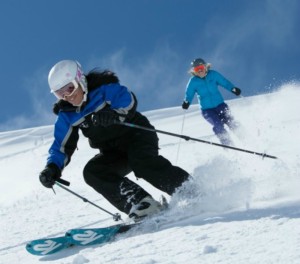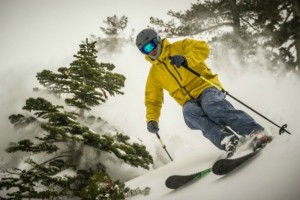How do you dress for skiing? It’s easy to see who is prepared and who isn’t when you are at a ski resort on a bitter cold day.

People often head to a ski resort unprepared for the weather. It’s easy to spot the rookies. Often times you can find these folks seeking the nearest warm fireplace before noon, looking to sip hot chocolate or something stronger to revive those frozen body parts.
However, a miserable weather day can be easily thwarted. Windy, wet or cold, it doesn’t matter with the right combination of clothing.
Here are some tips for what to purchase and why.
Layering: Whether it’s watching a football game on a late November evening or heading to the slopes on a chilly morning, the first layer to consider are the undergarments.
Although thermal underwear is always a good idea, the middle layer has a critical role as well, guaranteeing the chill stays away and the heat remains. Vests, sweaters and sweatshirts all work well.
Fleece is a popular material for protection. It has great insolating properties. Even when it gets wet, fleece will spread the moisture and drying will occur rapidly.
Time-tested wool will also get the job done. Avoid cotton; it absorbs moisture and does not ward off the wind.
The outer protection layer serves as the repellant. Most shells and pants are waterproof and will guard against snow, rain and also reduce the effects of wind.
Jeans may look good, but that’s about it. They are not waterproof and will quickly get soaked and stay that way.
Headwear: An uncovered head can be a huge mistake on a cold day, allowing at least half the body’s heat to escape.
Buy a hat made of wool or fleece. A helmet, which is popular headgear for many kids and adults, is a good idea, providing another great source of warmth and naturally protection. A neck warmer should be part of the cold weather package as well.

Gloves: Don’t go cheap; buy a quality pair of gloves. There is nothing like cold hands to spoil a day on the hill. Purchase fabrics that provide proper breathing and are waterproof. Mittens are generally warmer than gloves, but severely limit dexterity.
Avoid buying either gloves or mittens that are too tight. Air space is important at the fingertips because if provides insulation.
Socks: The more-socks-is-better theory doesn’t work. Multiple socks or very thick ones will restrict circulation, causing the feet to get colder as the day progresses.
One regular pair of socks, preferably made of wool, will do the job effectively.
Eyewear: Goggles and sunglasses can both play a major role in keeping the face warm. More importantly, they protect the eyes from ultraviolet light, which gets magnified reflecting off the snow.
Jeffrey Weidel can be reached at [email protected]. Follow him on Twitter at @jeffweidel and visit his website at www.tahoeskiworld.com.